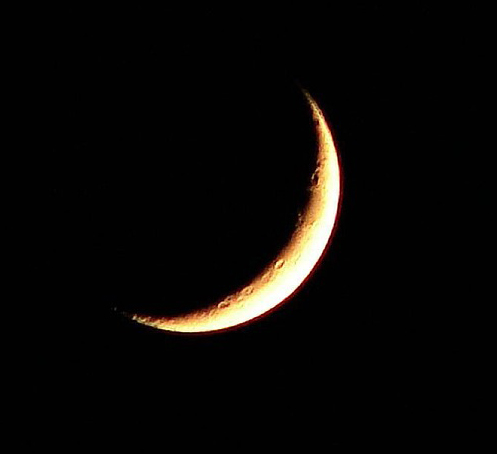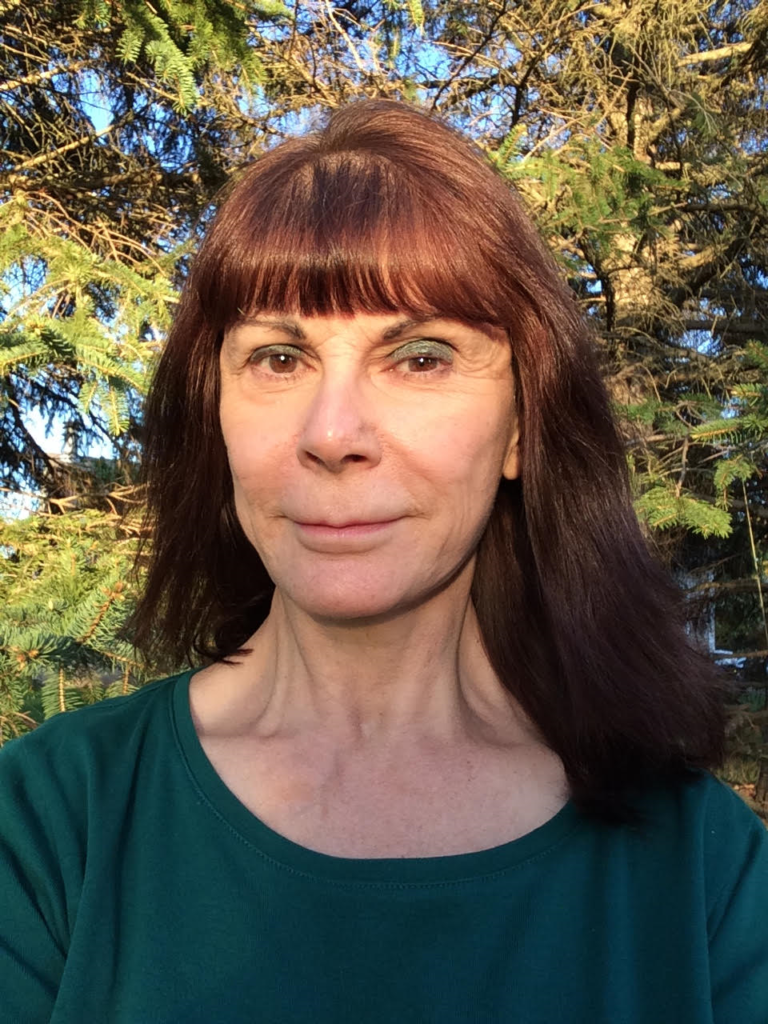Night Sky: Looking up educational fun for all ages
by Dee Sharples –
of the joys of being interested in astronomy and observing the sky is sharing it with other people. And sharing it with young children can be especially rewarding because as a bonus you get to see it through their eyes. My children still remember the times we spent together in our backyard looking up at the night sky, my enthusiasm as a budding amateur astronomer spilling over onto them. Their exclamations of “Wow!” or “There it is!” fanned my enthusiasm and made the experience even more memorable.
The best way to introduce young children to the night sky is not with a telescope but with the unaided eye. A comfortable chair or a blanket spread on the grass is a great starting point. However, on summer evenings when school is out, the later sunsets prevent very young children from viewing the stars and constellations at a convenient hour.

For this age group you can point out the waxing crescent moon early in the evening when the sky begins to darken. The slender crescent is being illuminated directly bythe Sun but you can still see the rest of the moon dimly lit by earthshine. Earthshine is the reflection of sunlight off the Earth casting a pale glow onto the nighttime portion of the moon. This phase of the moon is often referred to as “the old moon in the new moon’s arms.” To find out what evenings this waxing crescent moon will be visible in the west, check out the website www.spaceweatherlive.com/en/moon-phases-calendar. A science website which is designed for young people of all ages, illustrates the various phases of the moon: www.ducksters.com/science/phases_of_the_moon.php
The Strasenburgh Planetarium at the Rochester Museum & Science Center offers star shows geared in content and length for various age groups: 2 to 5, 5 to 8, 5 to adult, as well as for older children and adults. Detailed information on programs and ticket prices can be found at their website www.rmsc.org/strasenburghplanetarium/star-shows or you can call their information line at 585-271-4320. The museum and planetarium are located at 657 East Avenue in Rochester.
Books are also a great resource for introducing kids to astronomy. Libraries, book stores and the internet offer a variety of books to pique their interest.
The Astronomy Section of the Rochester Academy of Science (ASRAS) offers a great program for young astronomers. Carol Latta, coordinator of the Young Astronomer program, provided this summary:
“With such a strong ASRAS focus on outreach, we have made programs for young people part of our ongoing offerings. Throughout the year, we hold events for any interested youngsters. They and/or their parents do not need to be members of ASRAS to participate.
“Daytime event are typically held as part of our Open Houses at the Farash Center, which is our dark-sky observing site located in Ionia, and the topics and activities range from general physics experiments, to learning constellations, to studying spectra of stars, and many other areas of interest. We’ve had participants act as Solar System bodies to recreate their orbital motions. There is always a “just for fun” component to our events, such as making “glow-in-the-dark” constellations t-shirts. We also take advantage of the fantastic exhibits and activities at the Rochester Museum and Science Center to enrich our programs. For nighttime observing, we encourage Young Astronomers and their parents to take part in scheduled observing nights at the Farash Center.
“The true highlight of our Young Astronomer program is Summer Science Day Camp, when astronomy is the entrée, but any interesting science topic may be part of the schedule. Last summer, we simulated making camp on the surface of Mars, observed water bears, and viewed the Sun through a solar telescope. However, to participate in the Summer Science Day Camp, campers are required to have a student or family membership in ASRAS. Registration for the summer 2018 camp begins in April.”
To request more information about the Young Astronomer program, go to the ASRAS website at www.rochesterastronomy.org and click on the tab Contact Us. A wealth of other information is available on this website including Information for Beginners.
 Dee Sharples is an amateur astronomer who enjoys observing planets, star clusters and the Moon through her telescope. She is a member of ASRAS (Astronomy Section of the Rochester Academy of Science) and records “Dee’s Sky This Month”, describing what can be seen in the sky, on the ASRAS website at rochesterastronomy.org. Watch for her monthly Owl Light News feature to learn more about the night sky.
Dee Sharples is an amateur astronomer who enjoys observing planets, star clusters and the Moon through her telescope. She is a member of ASRAS (Astronomy Section of the Rochester Academy of Science) and records “Dee’s Sky This Month”, describing what can be seen in the sky, on the ASRAS website at rochesterastronomy.org. Watch for her monthly Owl Light News feature to learn more about the night sky.